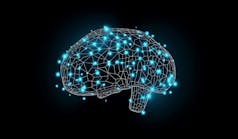AI in the clinical laboratory: Fact or science fiction?
What is AI and ML?
In the realm of computer science, artificial intelligence (AI) focuses on developing machines that mimic human intelligence to perform intricate and complex tasks. The ultimate goal of AI is to develop system interfaces that are so instinctive and natural that observers feel as though they are interacting with another human being.
Machine learning (ML) is one of the methods used to create and analyze the datasets used by AI. Machine learning does not rely on a programmer to specify the equations used to analyze data. ML looks for patterns and can ‘learn’ how to process data by examining data sets and expected outcomes.
ChatGPT has become a ubiquitous example in discussions surrounding AI and ML, from news reports to casual conversation by the coffee machine. ChatGPT is a highly effective computerized question and answer service that allows users to ask questions in plain everyday conversational language. The system provides incredibly detailed and well considered responses as if from a person who is an expert in the relevant field.
How do our definitions above fit with the ChatGPT example?
AI – ChatGPT uses technology called natural language processing to interpret the text of the question submitted.
ML – ChatGPT’s underlying technology uses machine learning to match the core components of the question identified by its AI component to search its vast collection of data sources to locate suitable answers.
AI – In the final step of the process, ChatGPT again uses AI to compose a coherent well-structured response to the question.
Where is AI and ML used in clinical laboratories today?
When looking at the current state of AI/ML in the laboratory, one of the most prevalent uses involves the recognition of patterns in images:
- Whole slide pathology imaging
- Cell-based imaging
- Breast cancer screening
In the examples above, large sets of example images are used to train the AI system to recognize key features. Once sufficiently trained, the system can then accept diagnostic images and automatically mark-up features of interest within the images. As these systems do not suffer from typical human frailties such as the need for sleep, rest periods, or distractions they promise to increase throughput and quality of detection above and beyond their human counterparts.
If we look more closely at breast cancer screening, however, there seems to be conflicting opinions about the effectiveness of today’s AI / ML models for detecting potential cancers. On one hand television reports and media articles are highly enthusiastic and optimistic about its ability to outperform radiologist review. On the other hand, a search of the British Medical Journal provides a more pessimistic outlook on the currently available AI and ML systems in healthcare stating, “Thirty four (94%) of 36 AI systems evaluated in these studies were less accurate than a single radiologist, and all were less accurate than consensus of two or more radiologists,”1 thereby contradicting those reports in the media. A more recent report in the Lancet states “Despite this effort, there remains substantial uncertainty about the accuracy of AI in real-world screening.” 2 These examples highlight the inconsistencies between what is perceived as achievable right now with AI and ML in the clinical laboratory versus the reality. In its current form, AI and ML cannot outperform a human. That being said, AI technology is continually advancing towards greater predictive power and enhanced capabilities, which will result in it overtaking human performance in the very near future.
Looking forward, where will AI/ML become crucial in the clinical space?
Personalized medicine has long been considered the next revolutionary step in healthcare. If we needed more evidence of this, our experiences with Covid-19 offer a clue. We have seen the response to the infection in vast populations, and we know they vary dramatically from the asymptomatic to the tragically fatal and all points in-between. This very public illustration of the individual’s unique response to the disease suggests just how powerful personalized medicine promises to be. Could we create therapies for individuals based on their very particular responses to a disease or an illness?
To deliver personalized medicine however the scope of clinical diagnostic testing and the subsequent data produced will need to exponentially grow. Existing data such as healthcare professionals’ observations and assessments and patient medical histories and imaging will require evaluation alongside the individual’s genomics, proteomics, and biological mechanism data.
To evaluate, make connections between data points, and derive insights for a single person is already a significant challenge. To do this at scale and to learn from population data thereby improving individual diagnosis is a vast undertaking. AI and ML will form a large part of delivering this next step. Companies such as Navignostics are deploying AI/ML in exactly this space, aiming to characterize tumors using spatial single-cell proteomics and identify cancer treatment that will optimally fight each patient’s disease.3
What do clinical laboratories need in order to facilitate the move towards AI/ML?
The reason Image analysis is one of the first examples of AI/ML seen in laboratories is due to the limited scope and uniformity of the data sources analyzed. If we consider a wider scope and complexity of data sources, this raises significant challenges from the technical issue of aggregating vast datasets obtained from diverse sources to the crucial human aspect of securing consent for personal data usage and safeguarding privacy. As discussed, we have medical records and diagnostic test results held within numerous health services from the doctor’s office to the emergency room, together with the biochemistry, genomics, proteomics data obtained from clinical laboratories that will need to be collated into a central repository.
A typical workflow for one source of data might be blood work tested on a hematology analyzer within the clinical laboratory. The data ideally will be automatically transferred from the analyzer to an information management system. It might then be combined with personal demographic data in a central repository together with perhaps genetic and proteomic data that has been collected elsewhere. The point here is that we have data flowing from instruments to systems and systems to systems located in, quite likely, different geographical locations. To use the full potential of AI and ML, this data must be combined within a central repository, and that is just the start. For AI to make sense of these data, they must be good quality, clean, well structured, and consistently named.
The routing of data requires seamless integration between systems. The range of instrumentation, analytics systems and information repositories is large and connecting them together is a challenge in itself. Moreover, the need for robust infrastructures capable of handling the transfer of large data volumes across distributed networks, along with adaptable architectures to support the ever-evolving AI and ML tools, further compounds the complexity of the situation. Nonetheless, it is important to note that these challenges can be overcome with the right approach and solutions.
For data to be clean and well-structured, there needs to be strict data governance employed at every data collection point within the process. For the data to be consistently named, tools such as ontology-based systems will need to be employed. Even when data is clean, consistent, and consolidated in a single repository, there are additional considerations with respect to the quality of the data. A paper published on the MDPI website titled “Healthcare Applications of Artificial Intelligence and Analytics: A Review and Proposed Framework” states, “Another important point is that training an algorithm on data containing misdiagnoses, erroneous treatments, or wrong scenarios that have not been reported will also have a negative impact on the performance of the algorithm in their predictions.” 4 The risk here lies in feeding flawed data into your AI model, leading to unreliable predictions that cannot be trusted.
While the technical challenges are indeed significant, another paramount aspect in healthcare revolves around patient privacy and informed consent. These elements establish the ethical and legal framework necessary for conducting any research involving human participants. Informed consent necessitates that participants are fully informed about the nature and purpose of the research and how their data will be used in perpetuity. This raises questions about the interpretability of how ML algorithms determine a particular decision and what level of detail the participant needs in order to understand how the algorithm is using their data. AI also introduces a lack of transparency. The algorithms used by ML may incorporate huge datasets of complex information that can be difficult to communicate in a way that is understandable and accessible to a layperson. Organizations will need to both consider implications on consent and develop clear communication strategies.
The future of AI in the clinical laboratory and beyond
AI possesses indisputable potential to revolutionize various domains of healthcare, including the clinical laboratory. However, contrary to media portrayals, we have not yet fully realized this potential. Nevertheless, despite the significant technical challenges and patient privacy concerns, the advantages offered by AI outweigh the drawbacks. The pivotal question remains: how adeptly can we harness AI's capabilities to expedite new techniques such as the introduction of personalized medicines, formulate tailored preventive and treatment strategies to reduce disease occurrence, and optimize treatment efficacy? Through meticulous regulation, ethical considerations, and ongoing technical advancements, AI holds the potential to reshape healthcare, fostering a healthier and more prosperous future.
References
1. Freeman K, Geppert J, Stinton C, et al. Use of artificial intelligence for image analysis in breast cancer screening programmes: systematic review of test accuracy. BMJ. 2021;374:n1872. doi:10.1136/bmj.n1872.
2. Marinovich ML, Wylie E, Lotter W, et al. Artificial intelligence (AI) for breast cancer screening: BreastScreen population-based cohort study of cancer detection. EBioMedicine. 2023;90(104498):104498. doi:10.1016/j.ebiom.2023.104498.
3. Navignostics - Finding the right drug for each patient. Navignostics. Published May 31, 2019. Accessed June 22, 2023. https://www.navignostics.com/.
4. Azzi S, Gagnon S, Ramirez A, Richards G. Healthcare applications of artificial intelligence and analytics: A review and proposed framework. Appl Sci (Basel). 2020;10(18):6553. doi:10.3390/app10186553.





